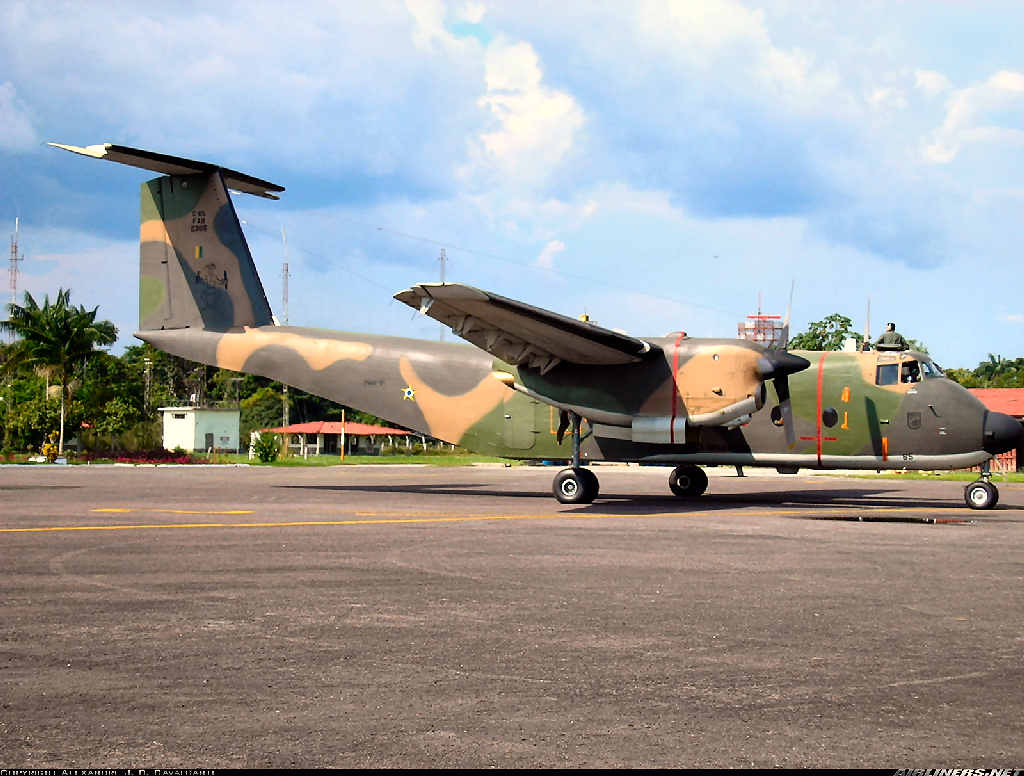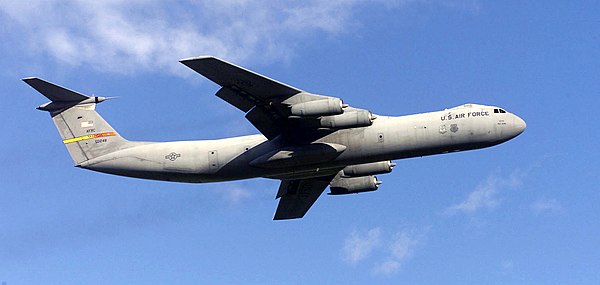Re: Sobre o KC-390
Enviado: Sex Out 20, 2017 10:12 am
Vou esperar para você me apresentar uma vantagem, dormindo...
A montagem dos profundores no topo de um estabilizador apenas resulta numa empenagem mais pesada e complexa, que apresenta stall abrupto quando num ângulo de ataque elevando. Agora pergunto: do que adianta um transportador militar não poder decolar com elevado ângulo de ataque?
Bah!
Vão dizer:
- Melhor controle de arfagem;
- Voo mais suave;
- Melhor razão de planeio;
- Minimiza danos por detritos...
No campo real, no dia-dia prático, as vantagens são mínimas, quando não desprezíveis.
É por isso que a pergunta de muitos é por uma vantagem real de uma empenagem em "T" que compense os seus defeitos.
Modinha. O C-130 tem que tipo de empenagem? A Antonov escolheu uma empenagem convencional para o AN-70 por que?
 [/quote]
[/quote]
O Sr. acha mesmo que para uma aeronave que vai operar em pistas não preparadas os danos por detritos não são considerados?
O stol pode ser avitado com dispositivos como o stick shaker e o pusher.
Na minha opinião tem mais vantagens do que desvantagens
The industry and regulatory authorities have learnt from these
accidents and T-tail airliners are as safe as any other aircraft in use
today. Given the potential hazards of a T-tail, it may appear strange
that manufacturers of light and business aircraft have adopted this
arrangement. This is not true for two important reasons. Firstly,
because the hazard is a known one, well researched and published.
Secondly, because light and business aircraft do not have a long
portion of fuselage forward of the wing. The long fuselage is an
important factor in a deep stall configuration, because at high angles
of attack the airflow up and around the fuselage tends to force the
aircraft nose upward.
T-tails do have several advantages, apart from getting the tailplane
out of the wing downwash and jet engine or propeller efflux, which is
particularly important in the long-range, high-speed cruise. These
include a higher tailplane aspect ratio, less interference drag and
improved fin efficiency. The better tailplane effective aspect ratio
follows because a greater proportion of the tailplane span is an aerodynamic
surface — a fuselage-mounted tailplane incorporates part of
the structure near the base of the fin, making it less efficient. T-tails
have less drag than a fuselage-mounted tailplane, or one half-way up
the fin, because only the lower surface of the tailplane is joined to the
fin. There is thus less cross-sectional area at the fin/tailplane intersection,
giving less interference drag. Fin efficiency is improved by a Ttail
because of the endplate effect — the tailplane effectively stops
airflow from one side of the fin spilling over the tip to the other, thus
allowing a smaller fin to be used.
The main disadvantage of a T-tail is that the fin has to be made
stronger — and hence heavier — to carry all the tailplane loads. The
other main disadvantages include the deep stall consideration, longer
control runs and a less accessible tailplane. The longer control runs
mean a greater length of potential slack in the circuit — most light
and business aircraft have control surfaces operated directly by cable
— and there is a slight weight penalty. The higher tailplane requires
work platforms for maintenance, but as this is usually minimal it is not
much of a disadvantage.
Despite the disadvantages of a high tailplane, most manufacturers
now agree that the performance benefits easily outweigh them. All the
major business jet manufacturers in the US now employ T-tails on at
least one of their aircraft, while many light aircraft also sport high tailplanes.
https://www.flightglobal.com/FlightPDFA ... 203762.PDF
A montagem dos profundores no topo de um estabilizador apenas resulta numa empenagem mais pesada e complexa, que apresenta stall abrupto quando num ângulo de ataque elevando. Agora pergunto: do que adianta um transportador militar não poder decolar com elevado ângulo de ataque?
Bah!
Vão dizer:
- Melhor controle de arfagem;
- Voo mais suave;
- Melhor razão de planeio;
- Minimiza danos por detritos...
No campo real, no dia-dia prático, as vantagens são mínimas, quando não desprezíveis.
É por isso que a pergunta de muitos é por uma vantagem real de uma empenagem em "T" que compense os seus defeitos.
Modinha. O C-130 tem que tipo de empenagem? A Antonov escolheu uma empenagem convencional para o AN-70 por que?
 [/quote]
[/quote]O Sr. acha mesmo que para uma aeronave que vai operar em pistas não preparadas os danos por detritos não são considerados?
O stol pode ser avitado com dispositivos como o stick shaker e o pusher.
Na minha opinião tem mais vantagens do que desvantagens
The industry and regulatory authorities have learnt from these
accidents and T-tail airliners are as safe as any other aircraft in use
today. Given the potential hazards of a T-tail, it may appear strange
that manufacturers of light and business aircraft have adopted this
arrangement. This is not true for two important reasons. Firstly,
because the hazard is a known one, well researched and published.
Secondly, because light and business aircraft do not have a long
portion of fuselage forward of the wing. The long fuselage is an
important factor in a deep stall configuration, because at high angles
of attack the airflow up and around the fuselage tends to force the
aircraft nose upward.
T-tails do have several advantages, apart from getting the tailplane
out of the wing downwash and jet engine or propeller efflux, which is
particularly important in the long-range, high-speed cruise. These
include a higher tailplane aspect ratio, less interference drag and
improved fin efficiency. The better tailplane effective aspect ratio
follows because a greater proportion of the tailplane span is an aerodynamic
surface — a fuselage-mounted tailplane incorporates part of
the structure near the base of the fin, making it less efficient. T-tails
have less drag than a fuselage-mounted tailplane, or one half-way up
the fin, because only the lower surface of the tailplane is joined to the
fin. There is thus less cross-sectional area at the fin/tailplane intersection,
giving less interference drag. Fin efficiency is improved by a Ttail
because of the endplate effect — the tailplane effectively stops
airflow from one side of the fin spilling over the tip to the other, thus
allowing a smaller fin to be used.
The main disadvantage of a T-tail is that the fin has to be made
stronger — and hence heavier — to carry all the tailplane loads. The
other main disadvantages include the deep stall consideration, longer
control runs and a less accessible tailplane. The longer control runs
mean a greater length of potential slack in the circuit — most light
and business aircraft have control surfaces operated directly by cable
— and there is a slight weight penalty. The higher tailplane requires
work platforms for maintenance, but as this is usually minimal it is not
much of a disadvantage.
Despite the disadvantages of a high tailplane, most manufacturers
now agree that the performance benefits easily outweigh them. All the
major business jet manufacturers in the US now employ T-tails on at
least one of their aircraft, while many light aircraft also sport high tailplanes.
https://www.flightglobal.com/FlightPDFA ... 203762.PDF









